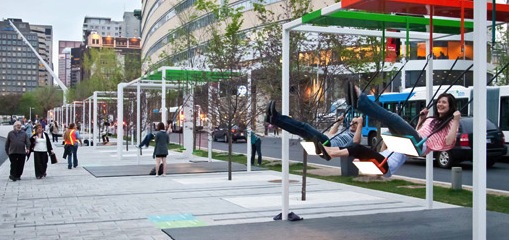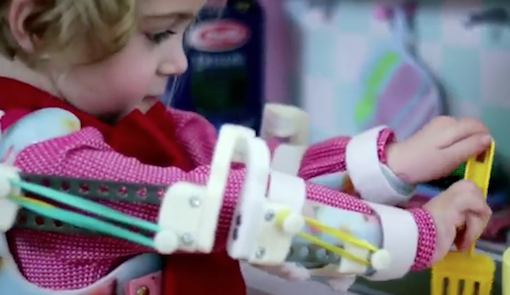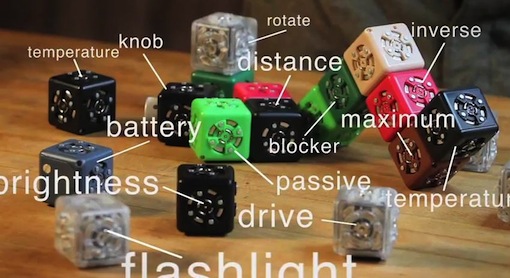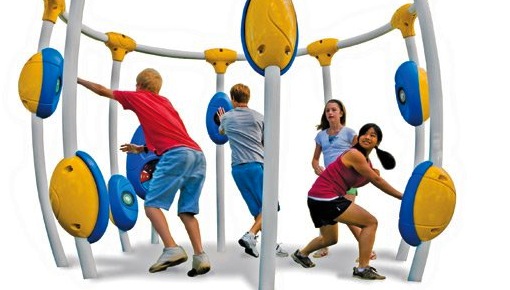May I go play across the street? (Or various other urban spaces)
 Monday, September 17, 2012 at 10:38AM
Monday, September 17, 2012 at 10:38AM 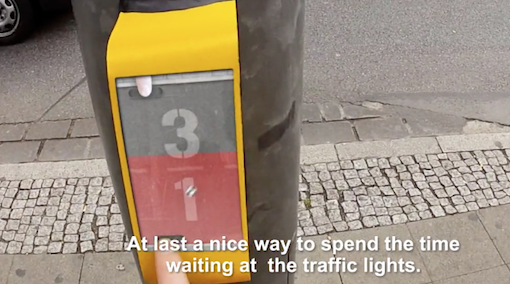 StreetPong — Be sure to look both ways before ponging the street.
StreetPong — Be sure to look both ways before ponging the street.
A friend pointed me to StreetPong [video] in Hildesheim, Germany. It blew up the interwebs recently. Unfortunately, most of the English speaking online world didn’t catch that this is a student design project where much of what is seen in the video is an elaborate mockup and video work. It was developed at the HAWK Hildesheim, Faculty of Art.
Be that as it may, it’s a really fun concept all the same. The terminals on both sides of a crosswalk are meant to manage it (signal intent to cross, countdown until pedestrians have right of way, etc.). These sorts of systems exist all over the world already. The student designers here took this a step further to allow people on either side of the street to play a short game of Pong while the countdown, well, counts down.
I am ever getting clearer on the distinction between playful and gameful. While this project uses game mechanics, I’d argue StreetPong is more playful than gameful in that it’s motivation is the experience and the enjoyment of the thing itself rather than the points won. It’s a way to have a moment with a perfect stranger. It’s more relational than competitive.
I’ve noticed a certain trend in public, interactive technology and art insallations. They tend to facilitate momentary interactions with strangers in the same urban space. I love this. Play is often relational and rather intimate. Opening a space for such a thing in our ever more urbanized world is a good thing.
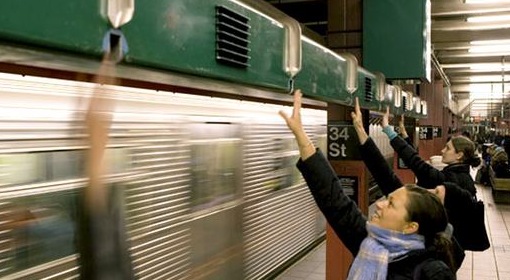 New York City subway — Play within reach.
New York City subway — Play within reach.
REACH New York, An Urban Musical Instrument [video] is another example from right here in New York City. What’s fun about this piece is two things. First of all, (depsite the appearance of the photo) most people don’t realize it’s there. It’s installed just above sight lines in the Herald Square subway station. When you wave your hand in front of the “crystals”, tones and even jungle sounds play. This leads to the second fun thing about this piece: triggering the tones activates an identical installation on the other side of the station across the tracks. Unfortunately, the orientation of the two units means that people interacting with the units do so with their backs to one another, rarely realizing that they can actually play with people across the way.
Montreal gets it as well. Swing sets have been removed from the playground and placed along a pedestrian walkway. The music they play gets better the more people play together.
Musical Light Swings on the Streets of Montreal:
Surrounded on both sides by a new music complex and science center, designers Mouna Andraos and Melissa Mongiat chose to bridge the gap between the two by converting a narrow strip of land into an enormous interactive instrument. Pre-recorded sounds from a xylophone, piano, and other instruments were programmed into color-coded swings that when in use play various notes, however when swung in unison with careful cooperation, more complex melodies and harmonies arise. An additional “secret mode” was programmed to only play when all 21 swings were in use. What a fun idea.

